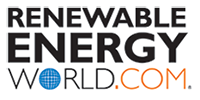 Recently completed big battery projects in various parts of the world offer a taste of what’s to come in 2017 for large-scale energy storage.
Recently completed big battery projects in various parts of the world offer a taste of what’s to come in 2017 for large-scale energy storage.
Last Friday, AltaGas Ltd. officially opened the Pomona Energy Storage Facility, situated in the East Los Angeles Basin of Southern California. At 20 megawatts of electricity storage capacity, AltaGas Ltd. says it is currently the largest battery storage facility in operation in North America.
AltaGas will be able to provide Southern California Edison (SCE) with the 20 MW of capacity for a continuous four hour period as required. This represents the equivalent of 80 MWh of energy discharging capacity; which it says is enough to provide the electricity needs of approximately 15,000 homes over the four-hour period.
“Providing energy from electricity stored in lithium-ion batteries provides clean reliable energy that complements California’s renewable energy portfolio while adding to the versatility of our asset base which is well situated for pursuing other energy storage developments,” said David Harris, President and CEO of AltaGas.
While the company says the project is the largest in North America, it may be a title it needs to share. Early last week, Electrek reported Tesla and Southern California Edison have completed a 20 MW/80 MWh energy storage facility at SCE’s Mira Loma substation; which uses the new Tesla Powerpack 2 .
Like the new Powerwall 2, the Tesla Powerpack 2 commercial energy storage solution features twice the energy storage capacity of its predecessor and also has new inverter; designed and manufactured by Tesla.
Elsewhere, Greentech Media reports India has launched its first grid-scale battery storage system, a 10-megawatt Advancion energy storage array designed for peak load management.
In related news, India’s first grid-scale solar energy plus storage tender reportedly attracted strong interest, with 13 developers submitting bids. The tender was for 5MW battery storage systems to be integrated into two separate solar energy projects of 50MW each at Kadapa Solar Park.
Over in Germany, the stage is also set for a very busy 2017. A recent study forecasts there will be a threefold increase in large battery projects this year, from around 60 megawatts last year to 200 megawatts this year.
Click Here to Read Full Article
read more
 Until recently, the world’s most remote off-grid communities have relied on traditional diesel generators to supply their electricity needs. This has created significant cost and reliability issues. Sometimes, it can cost more to transport the fuel to the site than it actually cost to purchase in the first place. Should adverse weather disrupt travel then there is a risk of running out of fuel. Furthermore, the gensets need regular expensive maintenance.
Until recently, the world’s most remote off-grid communities have relied on traditional diesel generators to supply their electricity needs. This has created significant cost and reliability issues. Sometimes, it can cost more to transport the fuel to the site than it actually cost to purchase in the first place. Should adverse weather disrupt travel then there is a risk of running out of fuel. Furthermore, the gensets need regular expensive maintenance. Following years of hype and underwhelming products, the plug-in vehicle market had a breakout year in 2016. Not only do consumers now have the option to buy an electric vehicle with more than 200 miles of range and pay less than US$40,000, but the year was littered with announcements of automotive OEMs committing serious resources to building their own electric vehicles – and not just compliance cars. Cost reduction in Li-ion batteries has enabled this revolution, as have better performing batteries optimised specifically for electric vehicles. Increasing Li-ion demand will help to continue to lower energy storage costs, but also bring up an important issue: what should be done with the batteries after they are used in vehicles?
Following years of hype and underwhelming products, the plug-in vehicle market had a breakout year in 2016. Not only do consumers now have the option to buy an electric vehicle with more than 200 miles of range and pay less than US$40,000, but the year was littered with announcements of automotive OEMs committing serious resources to building their own electric vehicles – and not just compliance cars. Cost reduction in Li-ion batteries has enabled this revolution, as have better performing batteries optimised specifically for electric vehicles. Increasing Li-ion demand will help to continue to lower energy storage costs, but also bring up an important issue: what should be done with the batteries after they are used in vehicles? Texas added energy jobs in November for the first time since Dec. 2014, when employment peaked during the oil boom and quickly fell as oil prices plunged.
Texas added energy jobs in November for the first time since Dec. 2014, when employment peaked during the oil boom and quickly fell as oil prices plunged. On 30 November 2016, the European Commission officially released its “Clean Energy for All Europeans” package, also known as “Winter Package” i.e., moving the EU to meet its climate change target with numerous legislative proposals to reform the EU energy market. This legislation will have an important impact on the electricity market and the development of renewable-energy going forward.
On 30 November 2016, the European Commission officially released its “Clean Energy for All Europeans” package, also known as “Winter Package” i.e., moving the EU to meet its climate change target with numerous legislative proposals to reform the EU energy market. This legislation will have an important impact on the electricity market and the development of renewable-energy going forward. AUSTIN, Texas and SAN FRANCISCO, Jan. 25, 2017 /PRNewswire/ — Texas Electric Cooperatives, Inc. (TEC), an association representing some of the largest electricity cooperatives in the United States, today announced a partnership with cleantech leader Advanced Microgrid Solutions (AMS) to offer AMS services to its member cooperatives, and host an advanced energy storage system installed and operated by AMS at its Master Distribution Center in Georgetown, Texas.
AUSTIN, Texas and SAN FRANCISCO, Jan. 25, 2017 /PRNewswire/ — Texas Electric Cooperatives, Inc. (TEC), an association representing some of the largest electricity cooperatives in the United States, today announced a partnership with cleantech leader Advanced Microgrid Solutions (AMS) to offer AMS services to its member cooperatives, and host an advanced energy storage system installed and operated by AMS at its Master Distribution Center in Georgetown, Texas.  Last year,
Last year,  WASHINGTON — Energy storage facilities should be permitted to provide multiple services and earn both cost- and market-based revenue streams,
WASHINGTON — Energy storage facilities should be permitted to provide multiple services and earn both cost- and market-based revenue streams,  The government has released plans to spend £28 million on reducing the cost of energy storage, advancing demand side response technologies and improving energy efficiency measures for UK industry.
The government has released plans to spend £28 million on reducing the cost of energy storage, advancing demand side response technologies and improving energy efficiency measures for UK industry.



